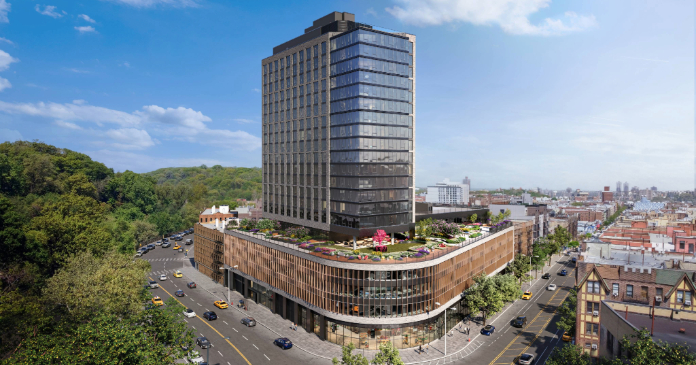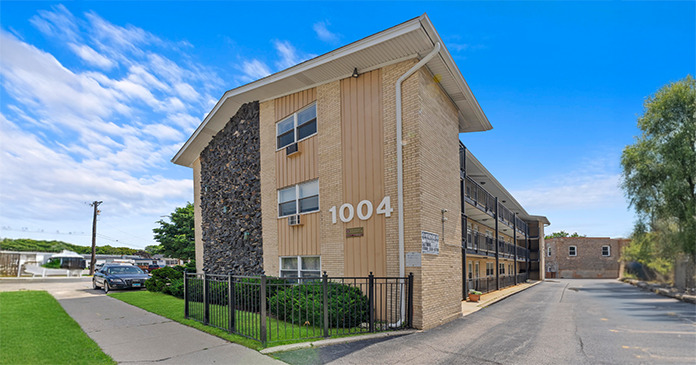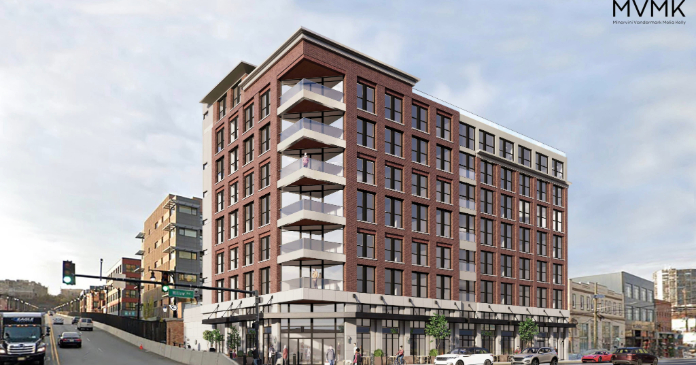The latest commercial property price report from MSCI Real Capital Analytics said that multifamily property prices in August were down 0.8 percent from their level of the month before and down 14.9 percent from their level of one year before. Both rates of decline were larger than the corresponding rates of any of the other commercial property types tracked in the report. In addition, last month’s reported price index gain for apartments was revised to a loss in this month’s reported data.
Defining CPPI
MSCI tracks an index called the Commercial Property Price Index (CPPI). The index is computed based on the resale prices of properties whose earlier sales prices and sales dates are known. The index represents the relative change in the price of property over time rather than its absolute price. Note that, as new properties are added to the MSCI dataset each month, they recalculate the CPPI all the way back to the beginning of the data series.
Apartment prices fall below pre-COVID trend
The first chart, below, shows how the CPPI’s for all commercial property and for apartments have changed since January 2016. To simplify the comparison, both CPPI’s have been normalized to values of 100 in January 2012. The chart also contains trend lines showing the straight-line average rates of price appreciation for the two asset classes based on their performance from January 2012 to December 2019.
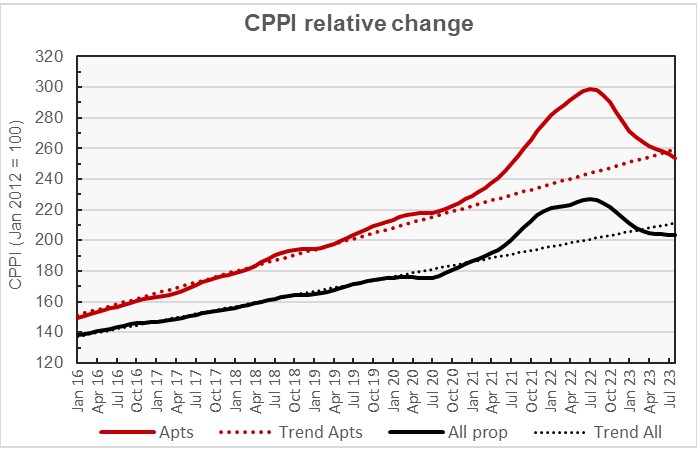
The chart shows that multifamily property prices have now dropped below the long-term trend line. However, with the revisions to the last month’s data, that threshold was actually crossed last month. Multifamily property prices in August were 2.1 percent below the long-term trend line. Since prices declined month-over-month, the gap between August’s multifamily property price and the long-term trend widened.
Prices for all commercial property as a single asset class have been below the long-term trend line since March and the gap is growing. They are now 3.7 percent below trend, up from the revised gap of 3.2 percent seen last month.
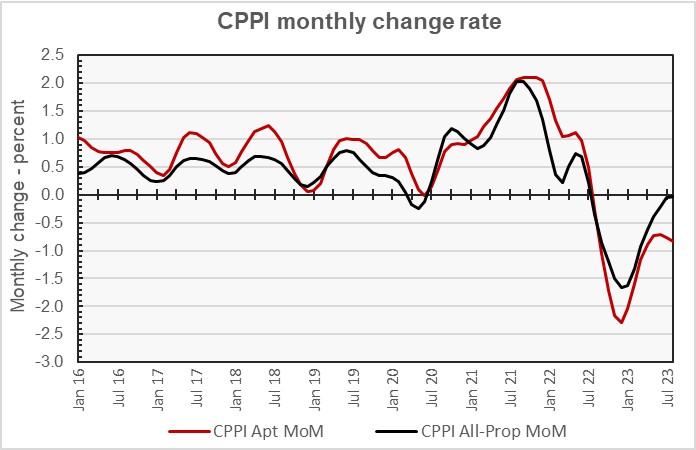
The next chart plots the month-over-month changes in the values of the CPPI since January 2016 for all commercial property as a single asset class and for apartments. The chart shows that month-over-month price changes for apartments had been becoming less negative, but this trend reversed in the last two months. Meanwhile, the month-over-month change in the CPPI for all commercial property was only marginally negative in July and August.
Other property prices mostly lower
On a month-over-month basis, suburban office and retail properties were the best performers, each eking out gains of 0.1 percent. Prices for industrial property fell 0.1 percent for the month, matching last month’s decline. Prices for office properties within central business districts (CBDs) were unchanged for the month.
All property types tracked experienced price declines on a year-over-year basis. Industrial property was the best performing with a price drop of 1.9 percent. Prices for offices within CBD’s were down 5.2 percent while prices for suburban offices fell 8.4 percent. Prices for retail property were down 7.4 percent.
Commercial property prices remain below trend
The MSCI report provides data comparing the price changes of commercial property in 6 major metro* areas against those in the rest of the country, although it does not separate out apartments from other commercial property types in this comparison. The next chart, below, plots the history of the relative price indexes since January 2016 for both market segments, along with trend lines based on straight-line fits to the changes in these indexes between January 2012 and December 2019. For purposes of this chart, both price indexes were set to a value of 100 for January 2012.
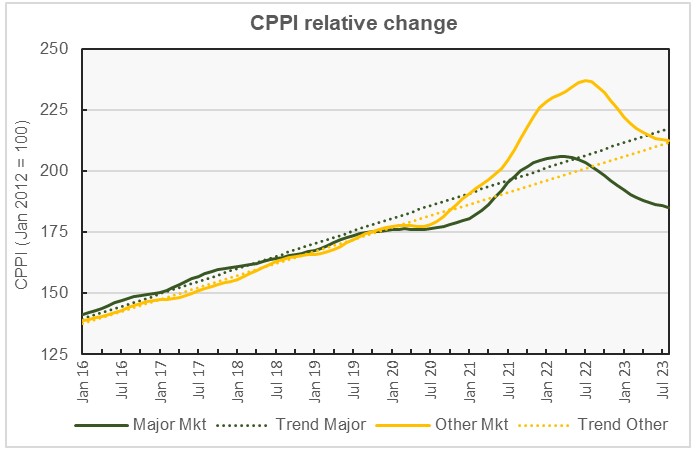
The chart shows that property prices within the major metros continue to widen the gap with the pre-pandemic price growth trend. They are now 14.9 percent below trend. However, prices for these properties remain 5.2 percent above their levels in January 2020, shortly before COVID broke out. Other market property prices are approaching the long-term trend but are still 0.5 percent above trend, about half of last month’s gap.
The final chart plots the history of the month-over-month changes in the price indexes for the two property markets since January 2016. The chart shows that month-over-month price appreciation for both markets continue to run negative, but the monthly declines have slowed since the beginning of the year.
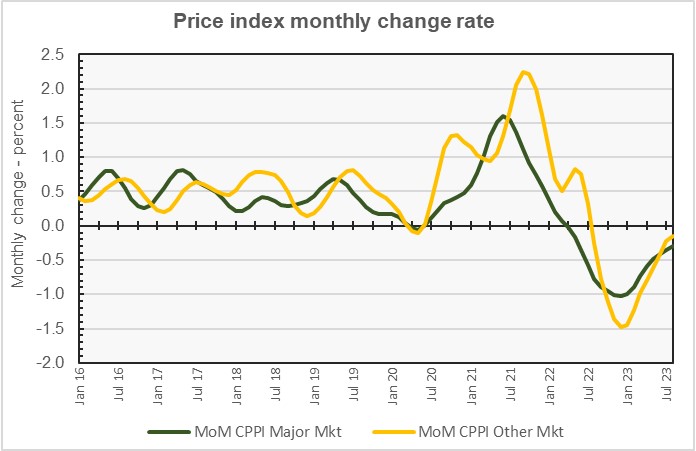
By the numbers, price appreciation for commercial property in major metros was reported to be -0.3 percent for the month and -8.3 percent for the year. Price appreciation for commercial property in non-major markets was reported to be -0.2 month-over-month and -10.1 percent year-over-year.
The full report provides more detail on other commercial property types. Access to the MSCI report can be obtained here.
*The major metros are Boston, Chicago, Los Angeles, New York, San Francisco and Washington DC.








